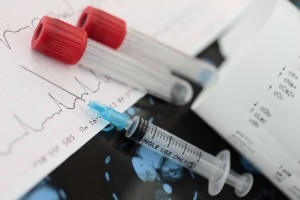LONDON, ONTARIO, CANADA – Morning report got much more interesting this week, as nephrologist David Adams fulfilled the unspoken dreams of internists around the world, as he announced that he found a new serum electrolyte to be measured.
 “We had corrected a patient’s potassium, we had titrated his sodium to a normal range, and his magnesium hadn’t been flagged in days,” said Adams in his press release. “We were just drawing up his discharge work, when I asked myself, ‘What else could we be correcting?’ and that’s when I acted on instinct, drew one last sample and sent it to the Chemistry Department at our university.”
“We had corrected a patient’s potassium, we had titrated his sodium to a normal range, and his magnesium hadn’t been flagged in days,” said Adams in his press release. “We were just drawing up his discharge work, when I asked myself, ‘What else could we be correcting?’ and that’s when I acted on instinct, drew one last sample and sent it to the Chemistry Department at our university.”
His instinct was a good one, as the chemistry team did find traces of another electrolyte not routinely measured in hospitals. And it’s because of that discovery that nephrology-inpatient Tomas Davidson’s serum tungsten level is back to a normal, healthy level. “I owe [Dr. Adams] my life,” said Davidson. “I thought I was fine; I eat healthy, I exercise regularly, but then Dr. Adams gave me the news about my tungsten… it was an eye-opener for sure.”
His bloodwork showed that Davidson’s tungsten was nearly 0.02 mmol/L below “comfort zone.” Dr. Adams and his team wasted no time in supplementing their patient with the hard metal in question, no doubt avoiding catastrophic events.
News of their discovery quickly made its way around the hospital, where internists on every team were quick to tack on serum tungsten levels to their lab requisitions. “It’s incredible,” said one internal medical resident, “you play with fluids and you correct the sodiums and the potassiums, but you always wonder what else is out there… well we don’t have to wonder anymore.”
One senior physician believes this news couldn’t come soon enough, saying that “we may have been missing these cases for years. I shudder to think how many hypotungstenemias have been overlooked on my watch.”
Dr. Adams hopes that this discovery will serve as a lesson in thoroughness to the internal medicine community. “I think sometimes we fail to see the whole patient, and that’s when we really lose the art and become robots.”







